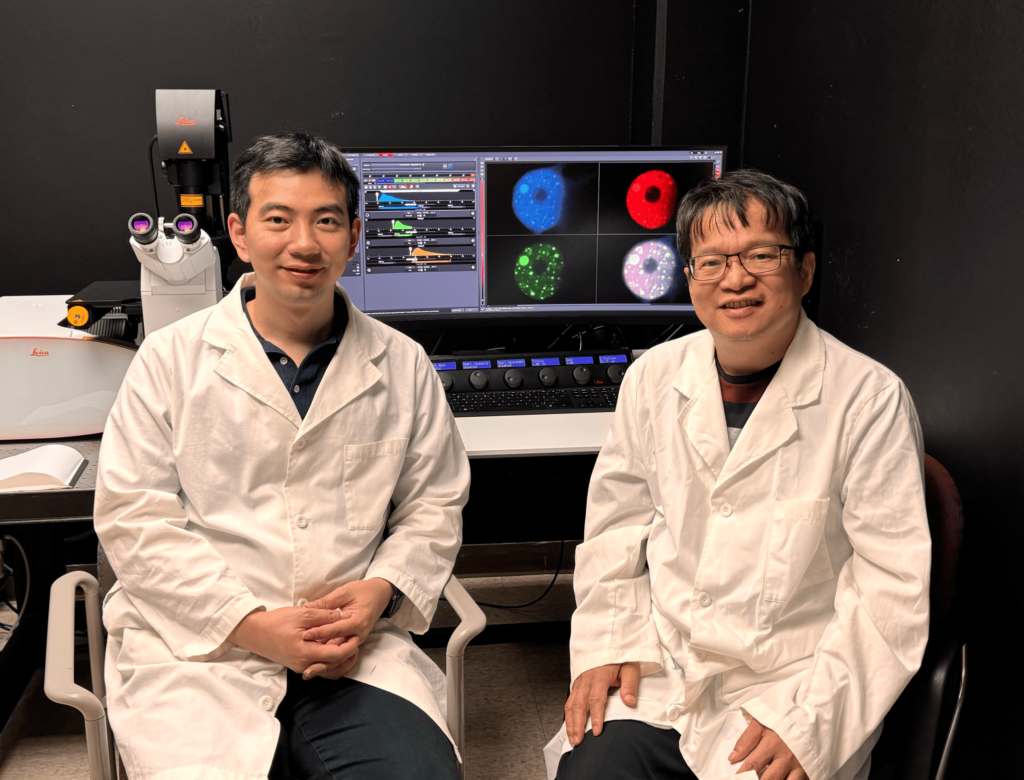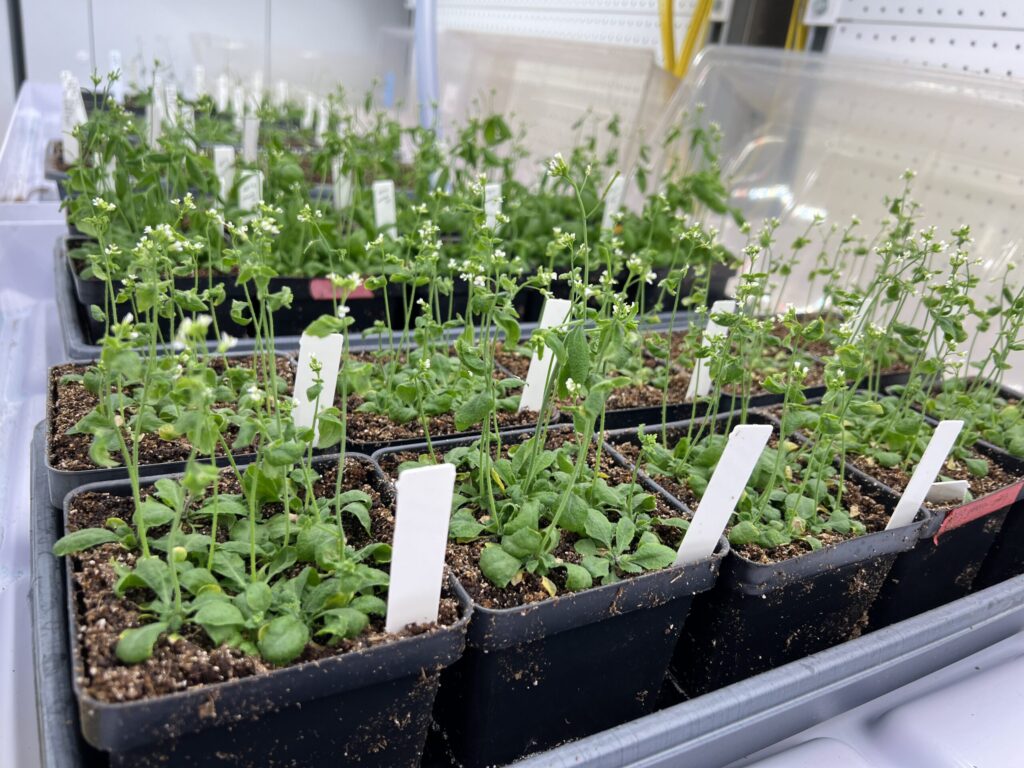- La Feria Community Holds Succesful Business Mixer Event
- Little Nashville to Take Place in Downtown Mercedes
- Lions Basketball Captures District Gold
- La Feria ISD Students Compete in Regional Chess Tournament
- Lions End First Half of 32-4A on a High Note
- La Feria ISD Held Another Successful Parent Conference
- Strong Appearance for Lions at Hidalgo Power Meet
- LFECHS Students Get to Meet Local Actress
- Students Participate in Marine Biology Camp
- Two LFECHS Students Qualify for All-State Band
Discovery Of A Protein’s Key Role In RNA Processes Could Improve Disease Treatment In Humans And Plants
- Updated: November 17, 2024

By Ashley Vargo
Texas A&M AgriLife researchers uncovered a promising target for controlling gene expression and other cellular processes, which could lead to advancements in crop resilience and our understanding of certain human diseases.
This target centers on RNA regulation, which, when disrupted in humans, is often linked to neurodegenerative diseases like Alzheimer’s disease and Parkinson’s disease, as well as many types of cancer. On the other hand, improvements in certain RNA production processes can lead to new therapeutics and improved crop resilience in plants.
With this in mind, a group of researchers led by Xiuren Zhang, Ph.D., Christine Richardson Endowed Professor in the Texas A&M College of Agriculture and Life Sciences Department of Biochemistry and Biophysics and jointly appointed professor in the Texas A&M College of Arts and Sciences Department of Biology, aimed to explore how RNA processes are coordinated within cells.
Their study, published in Nature Cell Biology, showed that a protein called Serrate connects RNA modification and microRNA production, two essential cellular functions, in a way previously unknown.
“We found that, instead of working in isolation, certain RNA processes influence each other,” Zhang said. “These new insights could allow us to regulate gene expression more precisely for applications in crop science and human health.”
The study was led by Zhang and performed by postdoctoral researcher Songxiao Zhong, along with support from other scientists within Texas A&M AgriLife Research, the Texas A&M College of Medicine, the University of Nebraska and the Guangdong Provincial Key Laboratory of Biotechnology for Plant Development. The project was funded by the National Institutes of Health, National Science Foundation and the Welch Foundation.
RNA’s role in plant and human health
RNA plays critical roles in the cell, ranging from acting as messengers to translating genetic code into proteins, catalyzing reactions and even regulating other RNA molecules to adjust gene expression. All of these are necessary to keep cells — and entire organisms — functioning properly.
With RNA’s diverse roles, Zhang said its production requires steps to ensure each molecule is precisely produced and properly decorated to perform its specific task. That’s where RNA modifications come in.
“You can think of RNA modifications like punctuation in a sentence,” Zhang said. “These modifications can act like an exclamation mark to emphasize certain instructions, like a comma to pause others, or even like a period to stop some RNA from being used altogether.”
Serrate’s role in RNA modification
Zhang and Zhong investigated the processes behind these modifications in their recent research study. In particular, they looked at the most abundant kind of modification, which involves adding a small chemical group onto the RNA molecule — called N6-adenosine methylation, or m6A modification.
In agriculture, the yield of rice and corn has been shown to be influenced by m6A levels on messenger RNA, or mRNA, which are eventually translated into proteins. Levels of m6A also impact plant resilience to viral infections.
Zhang’s team examined the molecular machine responsible for making this type of modification to the mRNA. They found that the protein Serrate interacts with this molecular machine to keep a disordered part of the machine from becoming too tangled to function.
They found that Serrate can also streamline the m6A modification process, making it more efficient, and prevent other enzymes from breaking it down.
While Serrate’s roles in other biological processes were already well documented, its role in maintaining the m6A-adding machine is new. The discovery of Serrate’s role in RNA modification reveals a connection between this process and the production of a different type of RNA: microRNA.
mRNA and microRNA connection
Zhang’s lab has been investigating Serrate protein for years, but not for its role in mRNA modification — instead, they’d been studying it for its more well-known role in producing microRNAs.
In the cell, microRNAs act as quantity control agents in protein production. These molecules can regulate gene expression by eliminating unnecessary RNAs or preventing certain RNAs from being translated into proteins.
Zhang and Zhong’s findings that Serrate is involved in both microRNA production and mRNA modifications show its unique position as a regulator of the fate of cells’ RNAs.
“Both of these processes have been studied separately, but their cross-regulation has remained largely unnoticed until now,” Zhong said. “We found that Serrate acts as a bridge between these two crucial mechanisms. This is an important step in our fundamental research. Understanding the coordination is essential for developing new treatments.”
Impacts on health and agriculture
Zhang said this discovery opens the door to treatments that could target this RNA modification process to correct problems in gene regulation, in addition to telling scientists more about these fundamental processes.
“We now have a clearer understanding of how m6A is regulated in the cell, which opens up new possibilities for drug discovery,” Zhang said. “By targeting the pathways we’ve identified, we could develop treatments for diseases that occur when these processes go wrong.”
Zhang said these findings are just as important for agriculture. RNA modifications help plants respond to environmental challenges like drought, unfavorable salinity conditions, and pressures from pathogens. The team believes that by manipulating these RNA processes, they could improve crop resilience and productivity.
Looking ahead, the research team plans to expand their work to study how these RNA processes operate in other crops and in human cells.
“This study gives us a new way to understand RNA regulation in a variety of species,” Zhang said. “We’re excited to explore how we can use this knowledge to improve the future of human health and agriculture.”





